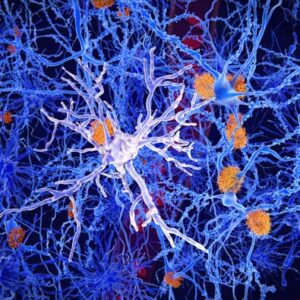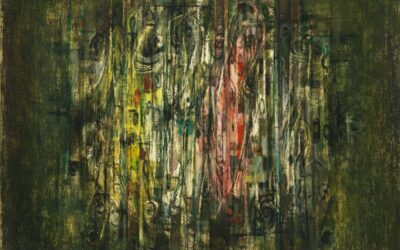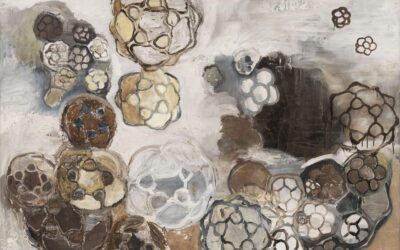 In recent years, the study of microglia, the often-overlooked brain cells, has gained remarkable attention in the field of neuroscience. This newfound focus on microglia is not without reason. Emerging research, particularly the work of Donna Jackson Nakazawa and Iain McGilchrist, has shed light on the pivotal role these tiny cells may play in shaping the future of mental health, trauma, and addiction treatment. In this essay, we will explore the potential implications of microglia research in revolutionizing our understanding and management of these critical aspects of human well-being.
In recent years, the study of microglia, the often-overlooked brain cells, has gained remarkable attention in the field of neuroscience. This newfound focus on microglia is not without reason. Emerging research, particularly the work of Donna Jackson Nakazawa and Iain McGilchrist, has shed light on the pivotal role these tiny cells may play in shaping the future of mental health, trauma, and addiction treatment. In this essay, we will explore the potential implications of microglia research in revolutionizing our understanding and management of these critical aspects of human well-being.
Microglia: The Brain’s Silent Guardians
Microglia are immune cells of the brain, traditionally thought to be responsible for defense against pathogens and injury. However, recent studies have unveiled their multifaceted functions. These cells continuously survey the brain, maintaining its health and function. Nakazawa’s work, as showcased in her book “The Angel and the Assassin,” underscores the notion that microglia are not merely reactive but proactive in maintaining brain health.
-
Mental Health: The Microglia-Brain Connection
Research suggests that microglia may hold the key to understanding mental health disorders such as depression, anxiety, and schizophrenia. These cells are involved in regulating neuroinflammation, which has been linked to mood disorders. Nakazawa’s work highlights how microglia’s improper functioning could contribute to neuroinflammatory processes and mental health issues. Understanding this connection may open new avenues for novel treatments targeting microglia to alleviate symptoms and improve the quality of life for those affected by mental illnesses.
-
Trauma and Microglia: The Healing Aspect
Trauma, whether physical or psychological, leaves lasting imprints on the brain. Microglia play a crucial role in the brain’s response to trauma by regulating inflammation and repair processes. Nakazawa’s research emphasizes how understanding microglia’s role in trauma recovery could lead to more effective interventions, helping individuals overcome the lasting effects of traumatic experiences.
-
Addiction: Microglia’s Influence on Craving and Relapse
Addiction is a complex brain disorder, and microglia may have a significant influence on its development and persistence. Nakazawa’s work discusses how microglia can become “primed” by repeated drug exposure, leading to heightened sensitivity to addictive substances. This phenomenon could explain the difficulty in breaking addiction cycles. A deeper understanding of the role microglia play in addiction may lead to innovative treatment strategies that target these cells to reduce cravings and prevent relapse.
Iain McGilchrist: Bridging Hemispheric Perspectives
Iain McGilchrist, renowned for his work on brain hemispheres in “The Master and His Emissary,” adds another dimension to the microglia narrative. His research explores how the left and right hemispheres of the brain influence behavior and perception. By combining Nakazawa’s insights into microglia with McGilchrist’s hemispheric perspective, we gain a more comprehensive understanding of how these brain cells may be implicated in mental health, trauma, and addiction.
-
Balancing Hemispheres for Mental Health
McGilchrist’s work suggests that an imbalance between the left and right hemispheres can contribute to mental health disorders. Since microglia play a crucial role in maintaining brain homeostasis, understanding how they interact with the hemispheres may provide new avenues for interventions. Targeting microglia to restore hemispheric balance could offer promising prospects for mental health treatments.
-
Trauma and Hemispheric Integration
Trauma often disrupts the harmonious integration between the brain’s hemispheres, leading to various psychological symptoms. Combining McGilchrist’s insights with Nakazawa’s findings on microglia could help us develop treatments that not only address trauma but also promote hemispheric integration and healing.
-
Addiction: Hemispheric Cravings and Control
Addiction is characterized by an overwhelming craving for a substance despite adverse consequences. Understanding how microglia interact with the hemispheres may reveal new strategies to regain control over cravings and addictive behaviors. McGilchrist’s research into the hemispheric influence on decision-making could provide valuable insights into addiction treatment.
Donna Nakazawa’s Pioneering Insights: Microglia as Key Players
Donna Jackson Nakazawa’s groundbreaking work in “The Angel and the Assassin” serves as a cornerstone in our understanding of microglia and their profound implications for mental health, trauma, and addiction treatment. Her meticulous research and engaging storytelling shed light on the pivotal role that these unassuming brain cells play in maintaining overall brain health and their potential as therapeutic targets.
Microglia and Mental Health: A Paradigm Shift
Nakazawa’s work challenges conventional wisdom by highlighting how microglia are far from passive bystanders in the brain’s functioning. Instead, they are dynamic and proactive cells that constantly monitor their environment, contributing significantly to neural communication and synaptic pruning. This newfound understanding has immense implications for mental health.
By uncovering the connection between microglia and neuroinflammation, Nakazawa’s research provides a fresh perspective on mental health disorders. It suggests that conditions like depression and anxiety may be influenced by an overactive neuroinflammatory response, potentially triggered by microglial dysfunction. Targeting microglia could thus open doors to novel treatments aimed at addressing the root causes of these disorders rather than merely alleviating symptoms.
Trauma Recovery: Microglia as Healing Agents
Trauma, whether physical or psychological, can leave lasting scars on the brain. Nakazawa’s work highlights the role of microglia as the brain’s sentinels during traumatic experiences. These cells govern the brain’s response to trauma by regulating inflammation, neuronal repair, and the removal of damaged cells.
Understanding the intimate relationship between microglia and trauma recovery suggests exciting possibilities for interventions. By modulating microglial activity, it may be feasible to enhance the brain’s capacity to heal and recover from trauma, providing hope for individuals who have endured significant adversity.
Addiction and Microglia: Cracking the Craving Code
Nakazawa’s research also delves into the complex world of addiction. She elucidates how microglia can become “primed” by repeated drug exposure, leading to heightened sensitivity to addictive substances. This priming effect may explain why overcoming addiction is so challenging.
The implications for addiction treatment are profound. Nakazawa’s work suggests that targeting microglia could be a promising strategy to reduce cravings and prevent relapse. By understanding the role of these cells in the cycle of addiction, researchers and clinicians may be able to develop more effective approaches to help individuals break free from substance dependence.
Donna Nakazawa’s pioneering work on microglia has provided a crucial foundation for understanding their central role in mental health, trauma recovery, and addiction. Her insights offer hope for the development of innovative treatments that address the root causes of these complex issues, potentially revolutionizing the way we approach mental well-being and neurological disorders. As we continue to explore the fascinating world of microglia, Nakazawa’s contributions stand as a testament to the transformative power of scientific inquiry and its potential to reshape the future of medicine and mental health care.
Donna Jackson Nakazawa and Iain McGilchrist’s work on microglia and brain hemispheres, respectively, offer compelling insights into the future of mental health, trauma, and addiction treatment. Microglia’s multifaceted roles in brain health and function, combined with the hemispheric perspective, provide a holistic framework for understanding and addressing these complex issues. As research in this field continues to evolve, we can anticipate innovative therapeutic approaches that target microglia to enhance mental well-being, facilitate trauma recovery, and combat addiction. The future of neuroscience and mental health treatment may indeed be shaped by these tiny, but mighty, brain cells.
Did you enjoy this article? Checkout the podcast here: https://gettherapybirmingham.podbean.com/
Influential Psychologists

























0 Comments